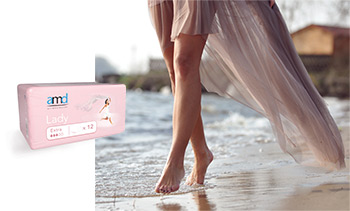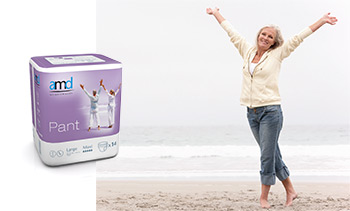Like millions of women, you suffer from urine leakage. Be aware that it is a common problem affecting one in three people of all ages. Even young women can experience urinary incontinence although its incidence rises with age, affecting 30-40% of women after the age of 65.
Its social impact should not be under-estimated: embarrassment, isolation, loss of confidence—it can soon become a significant problem.
But do not let urine leakage ruin your life. Protect your freedom!
What to do? Break the taboo and talk about it to your doctor who will be able to help you!
Because women’s lives are full of risky moments. We all know the various events that can explain why a woman might experience urine leakage at different points in life:
Stress incontinence is the commonest form
This is not preceded by a need to urinate. Laughing, sneezing, coughing, jumping or any simple physical exertion can cause it, and the volume is often small. This form mainly affects younger or post-menopausal women and is due to loss of tone in muscles of the perineum or sphincter.
Urge incontinence
When the need to pass urine is very frequent and comes on before a toilet can be reached. Due to an unstable or hyperactive bladder sending an urgent, intense urination message even though the bladder is not full. This type of incontinence can mask certain forms of disease.
Mixed urinary incontinence
Incontinence is said to be mixed when both types of symptom coexist, i.e. both stress and urge incontinence.
Here are some tips on how to minimise urine leakage in daily life
- Drink enough fluid to meet your daily needs. Preferably, divide your intake between the morning and two or three hours before bedtime.
- Drink less tea, coffee, alcohol and other diuretic foodstuffs.
- Exercise gently on a regular basis (as long as it does not exacerbate the problem). A few minutes of targeted exercise to strengthen the pelvic floor every day can significantly help with incontinence.
- If you are overweight, change your eating habits and lifestyle: eat a balanced diet.
- Prevent constipation; drink enough fluid and eat plenty of dietary fibre (whole-grain cereals, fruit and vegetables, etc.).




